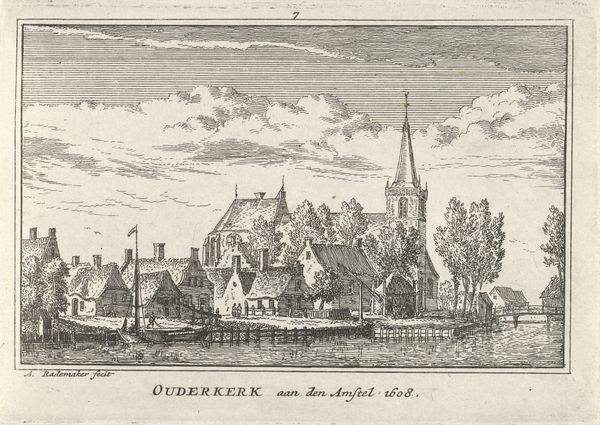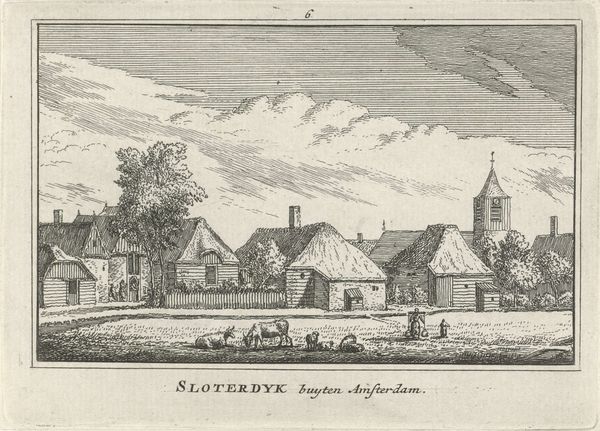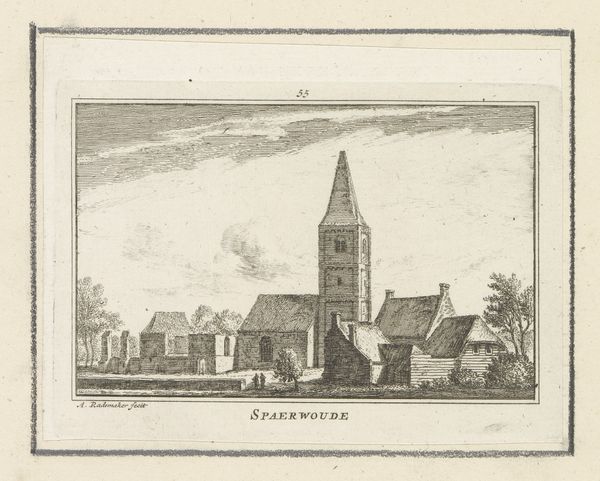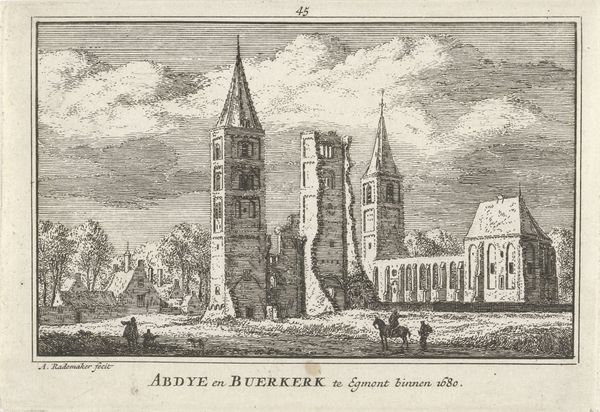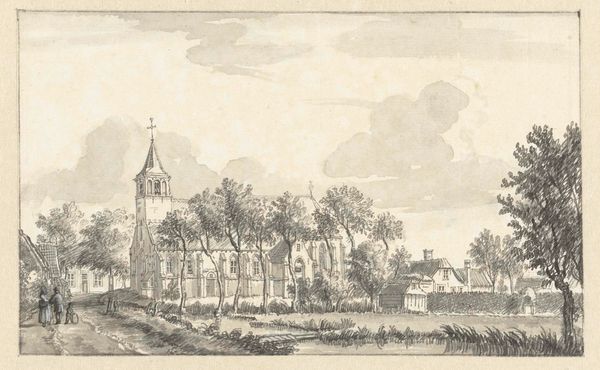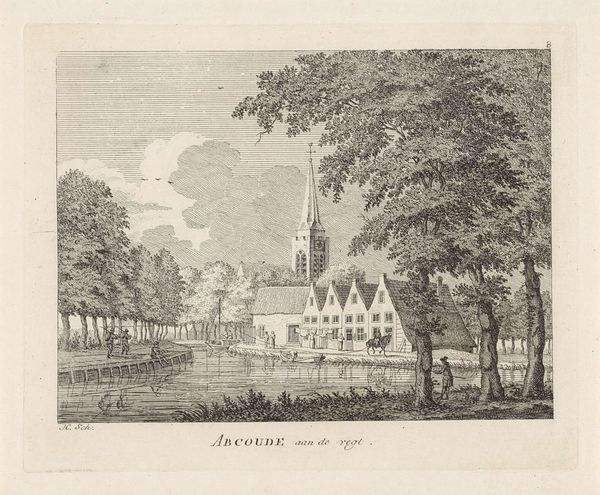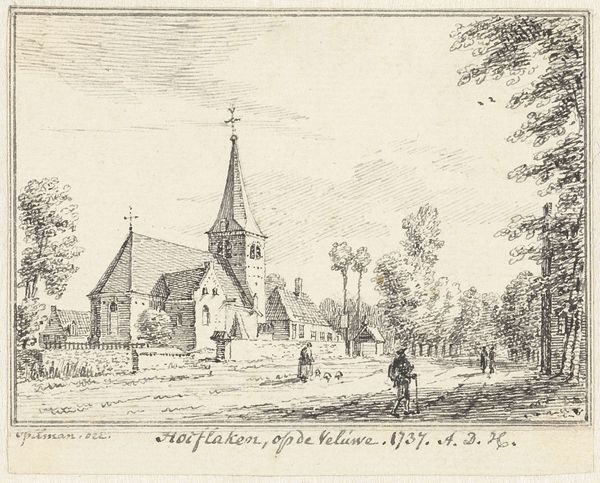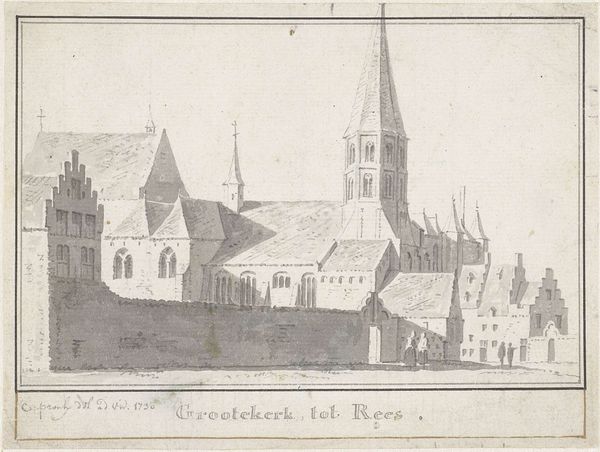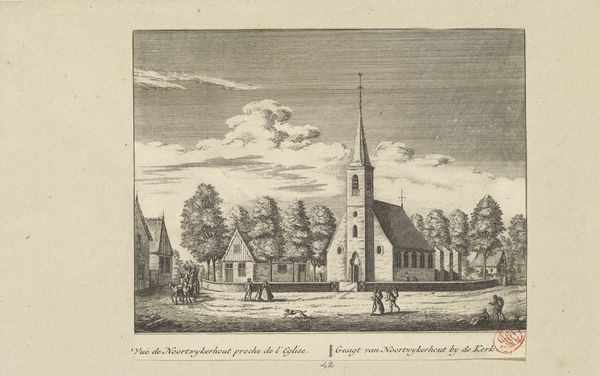
print, etching, engraving
#
dutch-golden-age
# print
#
etching
#
landscape
#
cityscape
#
engraving
#
realism
Dimensions: height 80 mm, width 115 mm
Copyright: Rijks Museum: Open Domain
Curator: Welcome. Here we have a print from between 1727 and 1733 by Abraham Rademaker. It’s entitled "Gezicht op Ouderkerk aan de Amstel"—a view of Ouderkerk on the Amstel river. It's an etching, an engraving. Editor: It's evocative, I find. It speaks of community, the image a collection of distinct buildings linked by the Amstel, a quiet harmony. The church dominates the view, both physically and, dare I say, spiritually. Curator: Indeed. The work exemplifies the Dutch Golden Age landscape tradition. Rademaker used etching and engraving—labor-intensive processes to render fine detail. The choice to depict the buildings clustered so tightly shows the reliance and relationships formed through that need for resources at the time. Editor: The spire of the church is such an obvious focal point; it pierces the sky like a visual declaration. Given its prominence, wouldn't you agree it holds deep religious significance, reflecting the community's values? Curator: Perhaps. Though it is important to note the social context. The production of these prints facilitated widespread dissemination. Affordable art was not so far away, creating an accessible marketplace. These are not mere decorations, they were reflections of societal progression. Editor: Yes, of course, but look at how the light shimmers on the water, reflecting off those humble homes. Each building seems to hold within it countless stories of ordinary people. Curator: I see the practicality, in these forms repeating in space; an emergent market economy supporting various specialists—engravers, publishers, distributors. This cityscape wasn’t made in isolation, so to speak, it represents a collaborative material exchange. Editor: True, the distribution matters, but consider too the psychological weight of a place, captured and immortalized. How many memories cling to that church spire? The Amstel’s calm surface seems to be hiding so much. Curator: The materials used, the etching, engraving… These were crucial to scaling distribution. Rademaker could multiply his image for mass appeal and, importantly, a profit. It moves beyond the purely symbolic, wouldn't you say? Editor: Perhaps, and it reminds me to keep looking at how symbols speak across generations, influencing how we see ourselves, and how we see home. Curator: Indeed. It is a detailed reflection on artistic materials in the time when they were new. It showcases not just the skill but the accessibility facilitated by it as well.
Comments
No comments
Be the first to comment and join the conversation on the ultimate creative platform.
